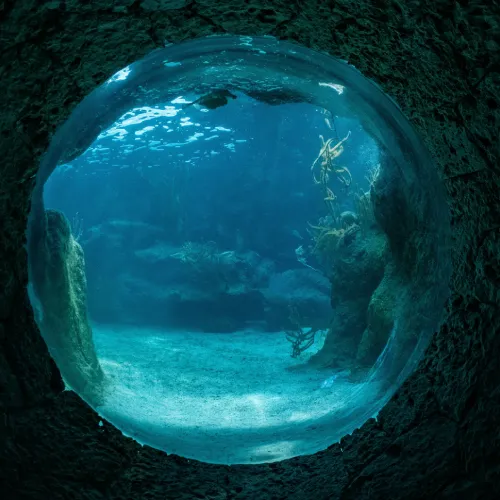I. Introduction: When Stainless Steel Encounters "Fire and Ice"
In April 2025. China's "Fendouzhe" deep - sea manned cabin was upgraded. For the first time, its outer shell used a new type of stainless steel to replace the traditional titanium alloy. Three months ago, the liquid oxygen storage tank of the US SpaceX "Starship" caused a launch delay due to low - temperature brittle fracture of the material. These two seemingly unrelated events jointly reveal a truth: In the journey of humanity's exploration of extreme environments, stainless steel is experiencing unprecedented survival tests.

You may not know that the ordinary stainless - steel sink in the kitchen shares the same "genetic code" as the deep - sea detector that dives into the depths of ten thousand meters and the spacecraft that traverses the interstellar space. However, it is precisely these extreme scenarios that expose the fatal weaknesses of this seemingly indestructible metal and also give rise to technological breakthroughs that subvert our cognition.
II. The Extreme Cold Battlefield in Space: The Life - and - Death Struggle at - 253°C
At the Wenchang Launch Site in Hainan, the bursting sound of a rocket fuel pipeline once kept engineers awake all night. The storage temperature of liquid hydrogen is as low as - 253°C, equivalent to the night - time temperature on the far side of the moon. Traditional 304 stainless steel becomes as brittle as glass here, and a slight vibration may lead to catastrophic fractures.
How do materials scientists break the situation?
Micro - structure Revolution: Through the "nano - twin" technology, a layered structure that is one - hundred - thousandth thinner than a human hair is created inside 316L stainless steel, enabling it to maintain toughness even at ultra - low temperatures. NASA tests in 2024 showed that the impact - absorbing energy of this material is three times higher than that of traditional steel.
Anti - radiation Armor: Neutron radiation in space can make metals "sick" - creating voids and swelling. The team from the Chinese Academy of Sciences added boron element (with an accurate content of 0.002%) to the steel, just like putting on a bullet - proof vest for the material, reducing radiation damage by 60%.
Intelligent Temperature - control Coating: Drawing on the hollow structure of polar bear hair, the developed ceramic composite coating can keep the extra - vehicular equipment stable in a drastic temperature difference from - 150°C to 200°C. It was applied to the robotic arm of the Chinese Space Station in 2025.
III. The High - pressure Purgatory in the Deep Sea: The Suffocating Test of 1000 Atmospheres
At a depth of 10.909 meters in the Mariana Trench, an area the size of a fingernail has to bear a pressure of 1 ton, which is equivalent to 2.000 African elephants standing on a dining chair. In 2023. the stainless - steel pressure - resistant shell of a certain country's deep - sea submersible suddenly developed cracks. It was the chloride ions in seawater that penetrated the "immune system" of the material.
Three Cutting - edge Technologies to Combat Deep - Sea Corrosion:
Gradient Nanocrystallization Treatment: A gradient structure from nanoscale to microscale is formed on the surface like a mille - feuille cake, increasing the pitting corrosion resistance of 2205 duplex steel by 8 times. It successfully passed the 7.200 - hour simulated deep - sea test.
Microbial Shield: The Hong Kong University of Science and Technology discovered that the metabolites of deep - sea sulfur - oxidizing bacteria can strengthen the passive film. Based on this, a bio - modified coating was developed, extending the lifespan of stainless steel in a hydrogen - sulfide environment to 15 years.
Self - healing Smart Materials: Inspired by the shell - repairing ability of river mussels, steel implanted with micro - capsules will automatically release repair agents and trigger metal deposition when cracks appear. It was applied to the submarine optical cable brackets in 2025.
IV. Civilian Miracles Spawned by Extreme Environments
These technologies that "go to the sky and enter the sea" are quietly changing our lives:
Refrigerator Revolution: Aerospace - grade thermal insulation technology makes the refrigerator 40% more energy - efficient. In 2025. the new Haier refrigerator only consumes 0.35 kWh of electricity per day.
Water Pipe Upgrade: The composite pipes created with deep - sea pressure - resistant technology can withstand the water pressure impact equivalent to a 20 - story building.
Medical Breakthrough: The orthopedic steel plate that mimics the self - repair mechanism of space materials can accelerate fracture healing by 30%.
V. The Future Battlefield: The Ultimate Evolution of Smart Materials
Standing at the forefront of technology in 2025. scientists are developing even more subversive materials:
Sensing Stainless Steel: Steel embedded with carbon nanotubes can autonomously report the location of damage, just like installing "nerve endings" on a bridge.
Deformable Metal: Inspired by deep - sea octopuses, the satellite antenna made of shape - memory alloy can automatically deploy in space with an error of less than 0.01 mm.
Environmental - friendly Recycling System: The "Steel Recycling Plan" launched by the EU, through microbial recycling technology, enables the reuse rate of waste stainless steel to reach 95%.
The Light of Civilization Spanning the Limits
From the pitch - black trench to the vast starry sky, the evolutionary history of stainless steel is exactly the epitome of the human spirit of exploration. As the winner of the 2025 Nobel Prize in Physics said at the award ceremony: "What we conquer is not nature, but the boundary of our understanding of materials." The next time you touch the stainless - steel countertop in the kitchen, perhaps you can feel the temperature of modern industrial civilization that comes across extreme environments.

